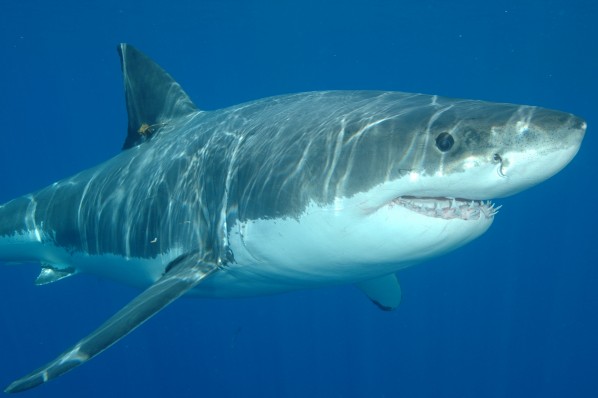← Back
Argos and the Pacific white sharks

Sharks are currently threatened all over the world, and the general public does not enough about their behavior and evolution. For the past 12 years MCSI (Marine Conservation Science Institute) scientists have been studying the behavior and migratory patterns of eastern Pacific White Sharks by equipping them with SPOT and Pop-up Argos tags.
A real-time tracking (SPOT tags)
SPOT tags send a message to the Argos satellite system each time the shark fin comes out of the water. The satellite may then establish a precise location (within approximately 350 meters) and sends the data via e-mails to the scientists. Thanks to this technology, MCSI researchers receive daily updates on the exact locations of the tracked fish.
Complete data in batch mode (Pop-up tag)
In parallel, scientists use pop-up tags that log temperature, depth and light intensity of the ocean. After a pre-programmed deployment period (up to 12 months), the tag releases from the fish, floats to the surface and uploads data to the Argos satellite system.
Essential information to protect sharks
Thanks to the Argos tracking, scientists have been able to determine the migratory patterns of adult white sharks, as they move between mating aggregations, offshore feeding areas and coastal pupping sites.
They also discovered that adult male and female migratory patterns are very different, especially while sharks are offshore in the SOFA (shared offshore foraging area) area. These studies strive to identify habitats and regions that are essential for the survival of white sharks, while also determining when and where white sharks are most vulnerable.
Get the Iphone / Ipad app released by MCSI to get real-time tracking of my satellite tagged white shark on www.expeditionwhiteshark.com/


